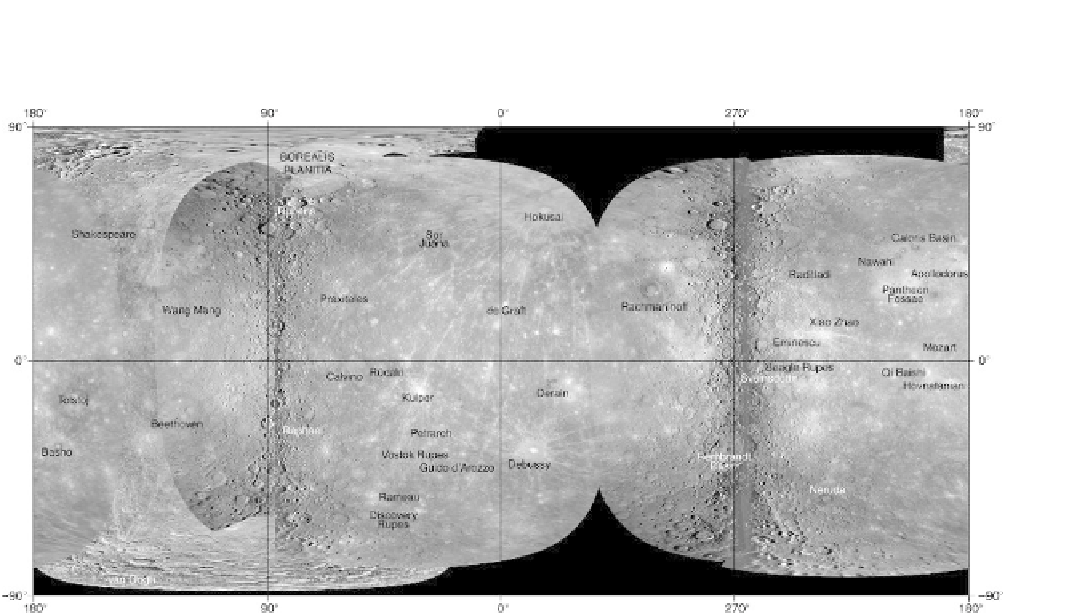Geology Reference
In-Depth Information
Figure 5.1. A mosaic of MESSENGER images for Mercury with some key named features (image from NASA/Johns Hopkins University Applied
Physics Laboratory/Carnegie Institution of Washington).
including the Mercury Dual Imaging System (MDIS) with
a wide-angle camera (WAC) and a narrow-angle camera
(NAC), spectrometers, a laser altimeter, and a magneto-
meter. Thousands of images have been returned (covering
~98% of the surface), including versions in color, and
topographic data along with spectra for determining the
compositions of the surface and tenuous atmosphere.
5.3 Interior characteristics
The magnetometer experiment on Mariner 10 detected a
weak magnetic
field around Mercury, setting off a debate
about the properties and con
guration of the planet
s
interior. Because of its high density, Mercury is thought
to have a large core that is 65%
-
70% iron, making it
unique in the Solar System (
Fig. 5.3
) and accounting for
60% of the planet
'
s mass. With the discovery of the
magnetic
field, it was suggested that parts of the interior
might be molten today, enabling the same sort of
“
dynamo
”
as on Earth to generate the magnetic
field. On
the other hand, Mercury
'
s slow rotation poses a problem
because it might be insuf
cient to drive a dynamo, and
some researchers suggested that Mariner 10 detected a
remnant magnetic field, rather than an active field. If this is
the case, it would suggest that Mercury was signi
cantly
different in the past (perhaps with a greater spin rate) or
'
Figure 5.2. A mosaic of Mariner 10 images of the south polar region
of Mercury, obtained during the third
yby.
outstanding team of planetary scientists. The spacecraft
was launched in August 2004 (some 33 years since
Mariner 10) to begin its roughly seven-year journey before
it went into orbit aroundMercury inMarch 2011. Along the
way, it made three successful
flybys of Mercury, returning
unparalleled data on the geology and other characteristics
of the planet (Solomon et al.,
2008
). Operated by the
Applied Physics Laboratory of Johns Hopkins University,
MESSENGER carries a sophisticated array of instruments,




